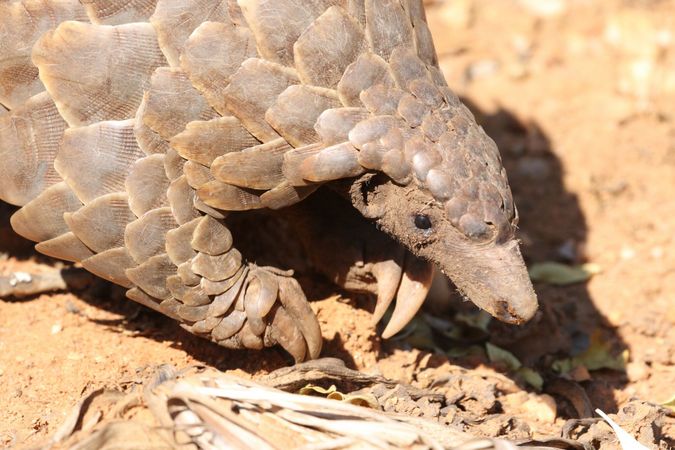
Written by Steff McWilliam (wild_is_life)
Amidst the catastrophe of wildlife poaching and trafficking, where animals such as rhinos, lions and elephants often take the spotlight, there is one very small creature that is mostly overlooked. A creature that some people do not know what it even looks like, and others that have no idea it even exists.
This creature is the pangolin, and it just so happens that they are the most incredibly fascinating little creatures out there. As one of the weirdest-looking critters to ever walk the earth, these scaly anteaters, of which there are eight species worldwide, occur only in Africa and Asia.
It is believed that they are the most poached and trafficked animal worldwide – more than rhinos, elephants, and lions. By a lot!
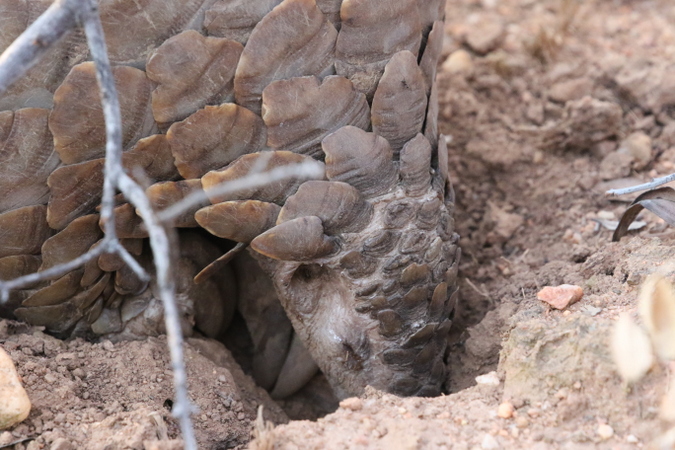
It’s estimated that more than a million of these sentient beings have been poached from the wild over the past decade and trafficked in the illicit wildlife trade all over the world. The driving force behind this is partly the demand for their meat – which is considered a delicacy in some countries – but mainly it is for their hard, keratinous scales that are (falsely) believed to yield magical medicinal qualities – which they most certainly do not.
Seizures of pangolins and their scales have soared disturbingly in the last decade, with one shipment weighing in at 11.9 tons of scales alone. A new comprehensive analysis done by TRAFFIC has confirmed that a combined minimum of 120 tons worth of pangolins and their scales were seized from international traffickers between 2010 and 2015, with an average of 20-25 tons a year!
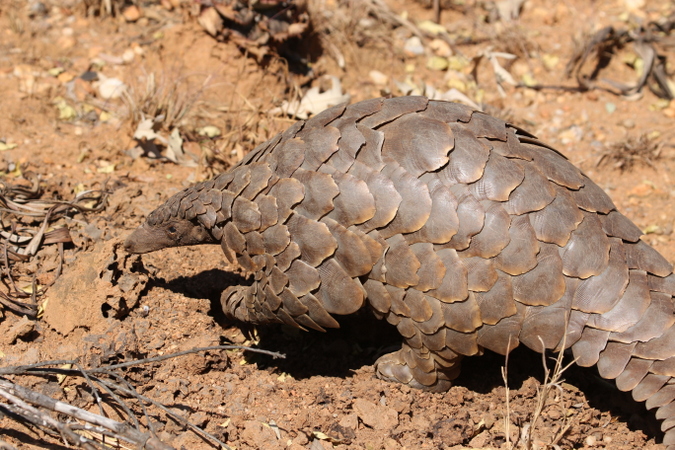
It may sound like a hopeless case for pangolins, but fortunately, there are those out there determined to help save these vulnerable creatures. I’m here to tell you about a group of incredibly passionate and dedicated people fighting for the survival of a pangolin species right here in Johannesburg, South Africa. And most importantly about the pangolins that made it back to the wild.
The African Pangolin Working Group in conjunction with the Johannesburg Wildlife Veterinary Hospital and the Human Society International have come together to create a formidable team in the fight for their survival. They have given months and years of their lives to give poached and traded pangolins the best possible chance of survival, and at no small cost.
Notorious for being very difficult to keep alive in captivity, the team continues to painstakingly take each rescued pangolin out every day for up to eight or more hours to forage for their natural food items: ants and termites.
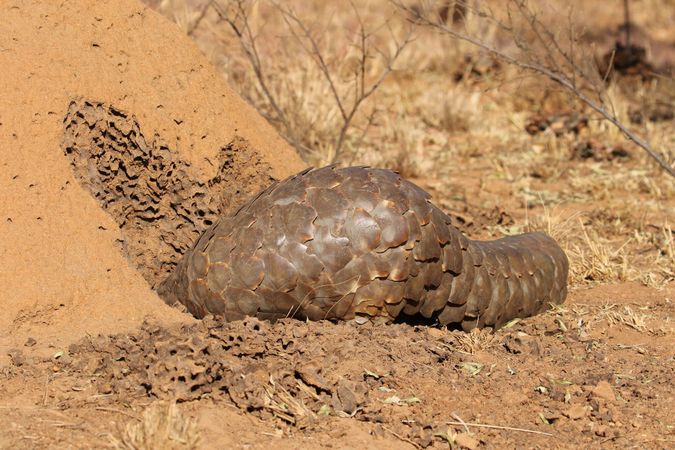
Over the past year alone the African Pangolin Working Group, the Johannesburg Wildlife Veterinary Hospital and the Humane Society International have managed to intercept and rescue more than 30 pangolins from the illegal wildlife trade, with a great deal of assistance from the South African Police Department.
A short while back two of the pangolins that were lucky enough to find themselves in the loving, capable hands of the experts at the Johannesburg Wildlife Veterinary Hospital, were finally returned back to their wild home after multiple tests, scans and checks were conducted at the hospital to ensure they were healthy and strong enough to resume their wild lives.

On one particular Friday morning not too long ago, Professor Ray Jansen from the African Pangolin Working Group fitted both pangolins with GPS trackers (costing close to R30,000), to ensure their safety and well-being.
After many days of planning, we arrived to pick them up (no small task) and began our long drive to freedom to an undisclosed location. Once we arrived we set up camp and scouted the area for the best termite mounds and ant nests around and began what in the animal rehabilitation world is called a ‘soft release’ process.
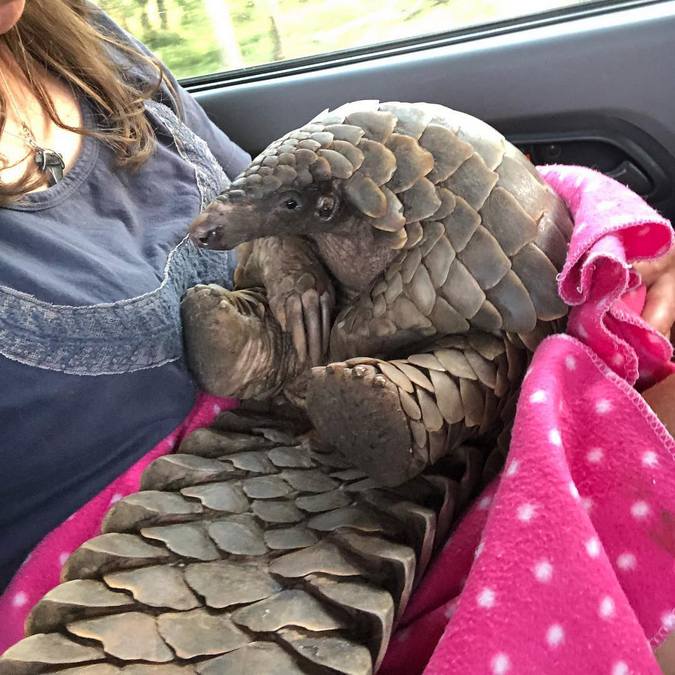
We opened the boxes and off they went, trundling into the darkness with us in hot pursuit, maintaining a distance far enough to make them comfortable but close enough to make sure we didn’t lose them! To help us in our struggle to keep track of them, we fitted reflective bicycle lights onto their scales (which we later removed) that emitted a constant dull light for us to follow. Like ghosts in the darkness.
With the radio telemetry tracking device and aerial in hand, along with our backpacks stocked with food, torches, spare batteries, a GPS and absolutely no signal on our cell phones, we each set off into the star-lit dark of the African wild.
In an area home to hippos, leopards and buffalo, we cautiously followed the pangolins as they effortlessly walked on their hind legs over rocky terrain, down steep inclines and into deep drainage lines. There was no shortage of spiders and their webs for us to walk through as we attempted to navigate our way through the thick and spiny vegetation in pursuit of two very (unfortunately) fortunate little beings.

Watching them snuffle around the dark, the wild smell in their noses once more, their intelligent little black eyes lit up and you could see their visible excitement.
After a few days of constant observation, we removed their reflective bicycle lights and that night they wandered off alone, truly wild once again.

Of all the animals I’ve ever worked with, there have been none as mystifyingly captivating as a pangolin.
Partly due to their bizarre appearance but also due to their personalities and helplessness. For millennia these animals have thrived with one of the simplest yet most effective defences of any animal on the planet: rolling up into a protective ball of hard scales. It protects them from the jaws of lions, hyenas, and leopards, but it can’t protect them from us. A defence that once protected them from the planet’s most fierce predators has, in a few decades, become completely redundant. People who come across them simply pick them up and put them in a bag. They don’t bite, they don’t attack, they don’t even try to run away. A creature that has been perfected by time has ultimately been defeated by its own defence.
It is painfully ironic but is also a poignant sign of our involvement in the destruction of our planet’s wildlife and wilderness areas, and a reminder of how badly they need our help, how much they deserve our help.
There may be many that slip through our open hands, but the tireless efforts of the employees and volunteers at each respective group has been absolutely awe-inspiring to witness as well as saddening as the donations and support dwindle, with the future of a species on the line.
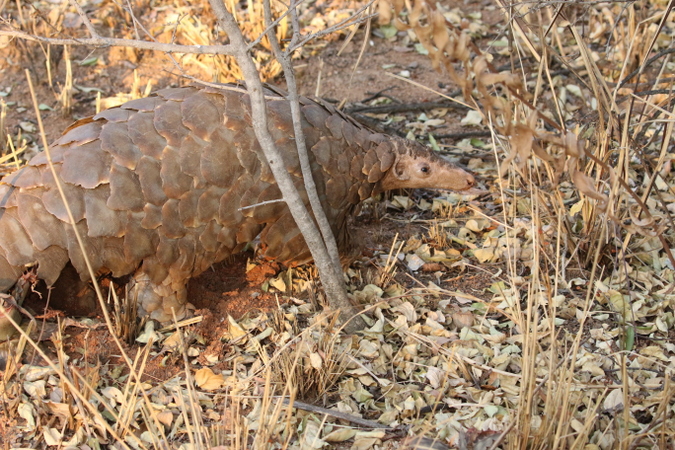
As we head into the Christmas season please keep these little guys in your thoughts as well as the groups dedicated to protecting them. I want to ask each and every one of you to challenge yourself to make at least one small sacrifice for the vulnerable and the helpless.
Whatever it is, it will be a positive step towards pangolin conservation and protection, whether it’s a potential sponsorship, a small donation or a simple thank you to those who will be working tirelessly throughout the Christmas season and into the New Year to save a species that is, in my opinion, well worth saving.

To comment on this story: Login (or sign up) to our app here - it's a troll-free safe place 🙂.![]()






